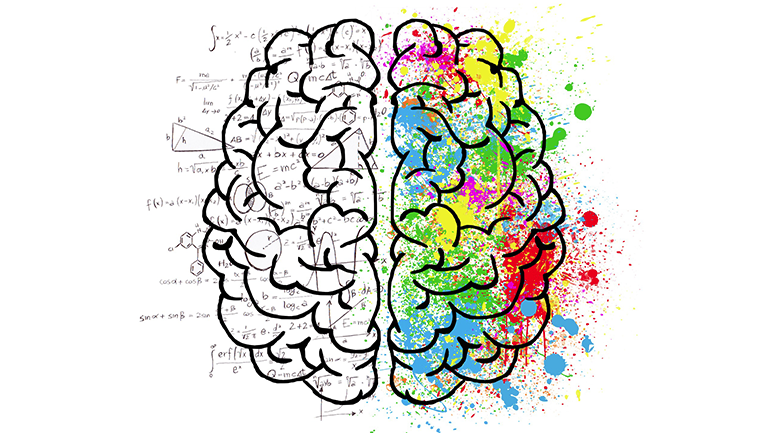Artificial intelligence is, essentially, an array of software implemented technologies intended to realize actions identical to those carried out by human brain’s commands (self-decisions, in particular). The term itself was formed in 1956. At that time, a supposition was made that intelligence can have entirely biological origins; however, according to practice, many researchers and software developers have been able to disprove that theory in the last few years. What is that disproof based on, in particular? The creation of machine learning conceptions made a grand breakthrough in the advancement of scientific works dedicated to this theme. Such AI-systems as IBM Watson, Deep Blue, and 20Q gained huge resonance in the field of high technologies.
Is a general programmer capable of developing an AI-based application if their knowledge of how artificial intelligence works limited? Fortunately, there are a number of dedicated platforms which one can use to their benefit when creating artificial intelligence apps. They are based on principles of artificial neural networks which are able to recognize speech and environmental objects quite precisely, as well as independently generate actions featured in developer software functionality. So, how do you develop artificial intelligence software? Let’s discuss.
How does artificial intelligence work?
Modern AI-based apps operate by the principles of machine learning and deep learning. The latter utilizes big data arrays and lots of computer power. Both processes are based on the operation of artificial neural networks, which automatically build graphs that represent software interpretation of remembering algorithms. In this way, the main goal of AI is to make an AI program that learns from and educates itself.

The most popular examples of software implementations with AI conception
Deep Blue. Developed by IBM, Deep Blue is a cluster of computers intended to play chess. It featured 480 chess processors (each went over around 2-2.5 million chess moves per second) and 30 P2SC processors. The invention gained wide popularity in 1997, and it was then that Deep Blue beat world chess champion, Garry Kasparov, in a series of games.
IBM Watson. Another project from IBM, Watson answers user’s questions by searching its own database. It features 80 servers (each functions due to eight POWER7 processors), utilizes about 15Tb of RAM and does not require an internet connection in order to function. The system has been actively applied in the healthcare industry for the past number years. By 2013, there were six such installations set up in the USA which, by the time of their initial launch, could already work with over 2 million pages of medical-related text.
20Q. 20Q is essentially a software version of the game 20 Questions. It was developed in 1988 and could ask a user 20 questions, which could be answered by “yes” or “no.” It then guessed an object set by the user. 20Q was based on the self-learning principle and is able to guess over 1 million objects according to a single question. A mobile version for iOS and iPad was released in 2014. 20Q’s main feature is the absence of the need to utilize extensive memory resources. Thus, this software solution can be applied to other systems which require more elaborate approaches to searches.

What can we say about mass designation products? Various chatbots, banking apps and personal virtual assistants (Siri, Cortana, Nina, Amazon Echo, etc.) have acquired wide popularity in the last few years. These solutions can significantly ease common user routines by carrying out advanced search processes, which are insufficiently done by a human being.
How to build AI software: what you will need to start
Platforms, with the help of which an AI software can be built.
Presented below is a list of the five most advanced platforms, and those most commonly used by developers, for AI software development:
-
Api.ai. An API created in association with Google developers, Api.ai is based on contextual memorization of previous user interactions. Its working principle is focused on two notions: entities and intents. Entities are objects that are automatically pointed out by a program when a user’s request is in place. Take, for instance, the question: ‘Where can I find a library?” - its entity is the word ‘library.’ In turn, intents specify the meaning of entities in a request’s context. Also, Api.ai uses domains – specialized bases of knowledge and data similar to encyclopedic ones, which actively utilize software implementations of the platform called agents. Api.ai is one of the most powerful tools for AI software development, mainly due to its compatibility with most widespread mobile platforms, to date – Android OS and iOS, and support of Node.js, Cordova, Unity, C++, Xamarin, Python, and JavaScript.
-
Wit.ai. The Wit.ai platform features special mechanisms that transform user voice requests into text. Afterwards, the platform carefully analyzes the received request and responds to it, operating by the same principle as Api.ai (based on entities and intents). The response is generated with the help of an integrated database and knowledge acquired during the machine learning stage. Additionally, the unique “history” feature (which saves contextual data) enables one to create advanced chatbots based on the platform in very short terms. Wit.ai is a perfect choice for developers that work with iOS, Android, Node.js, Raspberry Pi, Ruby, Python, C, Rust, and the Windows Phone.
-
Melissa. The open-source Melissa platform uses Python programming language and provides an opportunity to easily implement practically any AI-based app (similar in structure to your own AI assistant built in your smartphone). The platform is supported by all popular desktop operating systems. Moreover, Melissa features imbedded voice recognition mechanisms, which make it a perfect tool for the development of voice assistants of various types.
-
Clarifai. Clarifai is a platform which processes data received through cameras built in user devices. It features incredibly advanced mechanisms of systematization of knowledge acquired via machine learning. Software solutions created with the help of Clarifai are able to identify images received from external sources quite precisely. This software can automatically adapt to a working experience with a certain user, and is the next step in the searching process. Clarifai is perfect for developers with knowledge of such programming languages as Python, Java, and Node.js.
-
Tensorflow. Tensorflow is a library created by Google with an open source code. It offers developers a set of great tools for development of AI solutions based on deep machine learning. It also applies pre-installed databases, as well as unique user interaction experiences. With each request made via the artificial intelligence program based on Tensorflow, you will receive increasingly precise answers; however, this library is not flawless. The general nuance in the platform’s operation is that it is not adapted to work with novice users. Nevertheless, nothing is impossible, as they say. Having inspected the documentation in detail and learned more through some tutorials which describe the principles of interaction with Tensorflow, it is guaranteed that you will be able to build an AI app with primitive functionality.
Programming languages used to code an AI app
In order to develop AI software from scratch, you will need knowledge of certain programming languages. Here are the top five languages that will help you achieve great results in the development of a personal AI app with minimum effort and time spent.

-
C++. Object oriented C++ is a language with one of the quickest compilation processes in the world. That means that you can implement most complex business-logic in your app via C++ without harming its performance. What benefit does this bring, in practice? The language will be very useful during the development of apps, featuring rapid animation and immediate user interaction with the use of a rendering engine. C++ can serve as a programming mean for AI apps based on OpenCog framework.
-
Lisp. High-level Lisp language has been utilized since 1958, during the development of the earliest AI software solutions. Lisp provides an opportunity for implementation of a modern approach to object oriented programming. It supports encapsulation and polymorphous code behavior which, in turn, is very handy when creating management software (which can also feature AI mechanisms). You can find out a lot about the unique features in developing artificial intelligence software in the book called “Artificial Intelligence: a modern approach.”
-
Java. Java is another object oriented programming language that also features an enormous online tech support community. The language is characterized by capabilities of automatic memory management, elaborate approach to exception processing, availability of means for development of multi-thread apps, support of massifs, lists, structures, etc. Learning how to use Java will not take a lot of time, as it is included in the course schedules of many technical specialties across various universities and colleges. Java projects can be implemented via Neuroph and Weka frameworks.
-
Prolog. Prolog applies mechanisms that are very useful in AI software development, and, in particular, tree-shaped mechanisms of data structuring, juxtaposition of templates, etc. This programming language features good documentation and a large technical support community. Prolog is often used during the development of AI software with complex architecture that implies the simultaneous carry out of a number of logical operations.
-
Python. Python is among the oldest programming languages. It has been in existence for over 20 years, which indicates its relevance today. The language is in great demand due to simple integration with data structures (which are, oftentimes, used in AI algorithms) and a steep learning curve. AI software development algorithms are kind of unique and fall outside the boundaries of standard programming. Considering that fact, in order to program AI software you will need to extend your knowledge with such libraries and tools as NumPy, Pandas, Scikit, Theano, AIMA, SimpleAI, EasyAi, PyBrain, MDP, etc.
How to create AI: summary
The artificial intelligence concept is extremely promising for developers. Nonetheless, commonly used modern AI-based applications are quite limited in functionality (e.g. they answer clients’ questions similarly to commercial website chatbots); however, the IT sphere is rapidly acquiring new tools and ideas for the implementation of more desired functionality. Having considered that fact, we believe that artificial intelligence will be able to initiate much more complex tasks in the very near future.

Our team is definitely not new to the development of AI-based software solutions. If you would like to build your own artificial intelligence systems, but do not have either the time or required knowledge, leave it to the real professionals – make use of our services! Fill out this form to get started, and a manager will contact you to discuss your options, as soon as possible.







